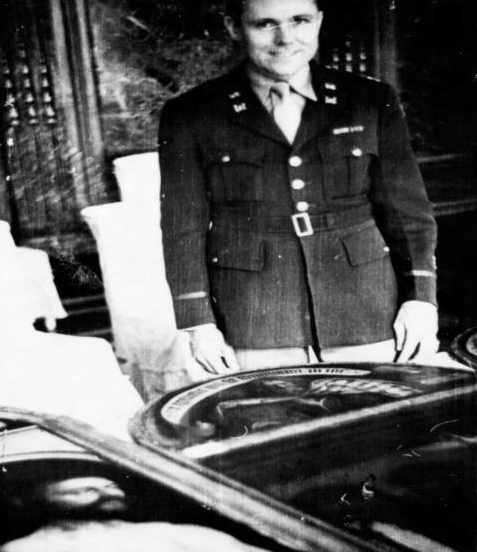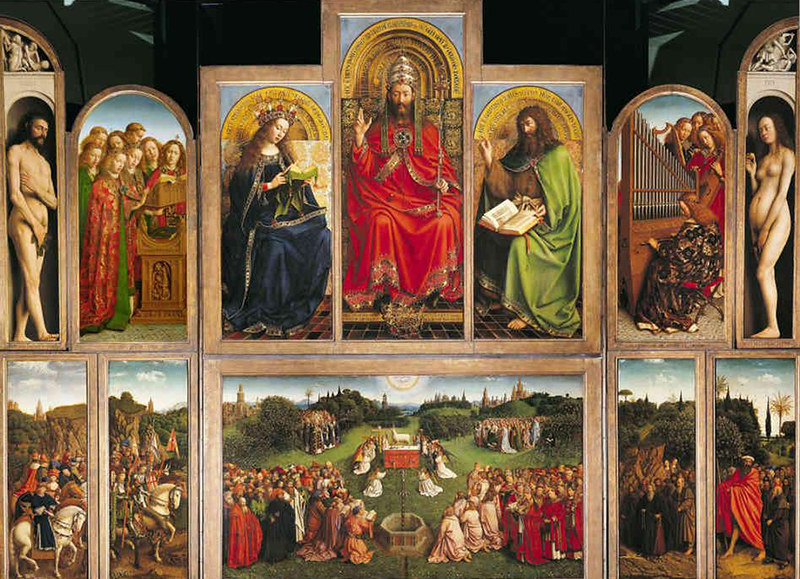Auburn's Monuments Man
Article body
In the spring of 1943, the United States established the American Committee on the Protection and Salvage of Artistic and Historic Monuments in War Areas – the Roberts Commission – which was charged with promoting the preservation of cultural treasures in war-torn Europe and Asia.
The commission provided lists and reports on cultural treasures to military units, worked with the Civil Affairs Division of the War Department and proposed the establishment of the Monuments, Fine Arts, and Archives (MFA&A) section. The MFA&A were a small group of men and women who volunteered for service and whose principal charge was to protect monuments and other cultural treasures from the destruction of World War II. Yet, no less important was the MFA&A's enormous responsibility to track down and return moveable works of art which were looted by the Nazis.
The officers and enlisted personnel of the MFA&A were comprised of museum directors, curators, art historians and architects. Most held degrees from Ivy League institutions and were associated with world renowned museums such as the Metropolitan Museum of Art (The Met) and the National Gallery of Art. Yet, among that select group was an outsider, Captain Robert K. Posey (U.S. Army), an Alabama Polytechnic Institute graduate and Monuments Officer assigned to General George Patton's Third Army.
Posey was born on April 5, 1904, in Morris, Alabama, and when he was 13 moved to Birmingham. Posey's family, like many Alabama families of that time, was poor and it was thanks in large part to a Reserve Officer Training Corps (ROTC) scholarship that he was able to attend Auburn University graduating with two degrees: a B.S. in architectural engineering in 1926 and a B.S. in architecture in 1927.
Shortly after his arrival in Normandy in July 1944, a military courier handed Posey photographs of Jan van Eyck's "The Adoration of the Mystic Lamb," also referred to as the Ghent Altarpiece. The "Mystic Lamb" is Belgium's most important and beloved artistic treasure and arguably the single most influential painting ever made. Hitler coveted the painting and in July 1942, he ordered that the painting be turned over and with that, the "Mystic Lamb" was taken to a hiding place within the Reich.
In March of 1945, Posey received a tip from a former SS officer who was an art historian and confidant of Nazi Germany's second in command, Reichsmarschall Hermann Göring. The officer shared information that there was a massive theft program orchestrated by the Nazis and that Hitler planned to assemble a Reich-wide museum – the Führermuseum – in his boyhood home of Linz, Austria – with Europe's stolen patrimony which was hidden in a salt mine near the Austrian alpine village of Alt Aussee.
Posey arrived in Alt Aussee on May 12, 1945, and there he discovered deep within the mine van Eyck's Mystic Lamb as well as over 6,500 paintings and other objets d'art including Michelangelo's Bruges Madonna and Vermeer's The Astronomer. From mid-May 1945 up to his return to the U.S. later that fall, Posey oversaw the rescue of thousands of priceless works by Vermeer, Raphael, Breughel, Titian, Rembrandt, Van Dyck, Michelangelo, Altdorfer, Rubens and the Rothschild jewels to name a few.
On Aug. 21, 1945, the Mystic Lamb left the U.S. Army's art collecting point in Munich on a chartered flight. Appropriately enough, by orders of General Eisenhower, the only person accompanying this priceless work was its rescuer, Captain Robert Posey. As it was the most important piece of artwork stolen by the Germans, it was the first to be returned.
Though Robert Posey was proud of his contributions to the war effort, he rarely spoke about his war-time experience. Nor did he keep in long-term contact with any of the other MFA&A officers with which he served. Although having left Alabama in 1929, Posey was proud of his Alabama roots and always considered himself a Southerner. Robert Posey retired in 1974, and died on April 18, 1977, at the age of 73. For his actions in rescuing Europe's patrimony, Posey was awarded the French Cross of the Legion of Honor as well as the Belgian government's Knight of the Order of Leopold.
On the day of his internment at Birmingham's Elmwood Cemetery the Belgium government sent a bouquet of flowers in sincere gratitude to an American soldier, Alabama's Monuments Man, who rescued the Mystic Lamb.
(This article first appeared on the al.com website June 18, 2014.)
Related Media
Media interested in this story can contact Communications Director Preston Sparks at (334) 844-9999 or preston.sparks@auburn.edu.
Auburn University is a nationally ranked land grant institution recognized for its commitment to world-class scholarship, interdisciplinary research with an elite, top-tier Carnegie R1 classification, life-changing outreach with Carnegie’s Community Engagement designation and an undergraduate education experience second to none. Auburn is home to more than 30,000 students, and its faculty and research partners collaborate to develop and deliver meaningful scholarship, science and technology-based advancements that meet pressing regional, national and global needs. Auburn’s commitment to active student engagement, professional success and public/private partnership drives a growing reputation for outreach and extension that delivers broad economic, health and societal impact.







